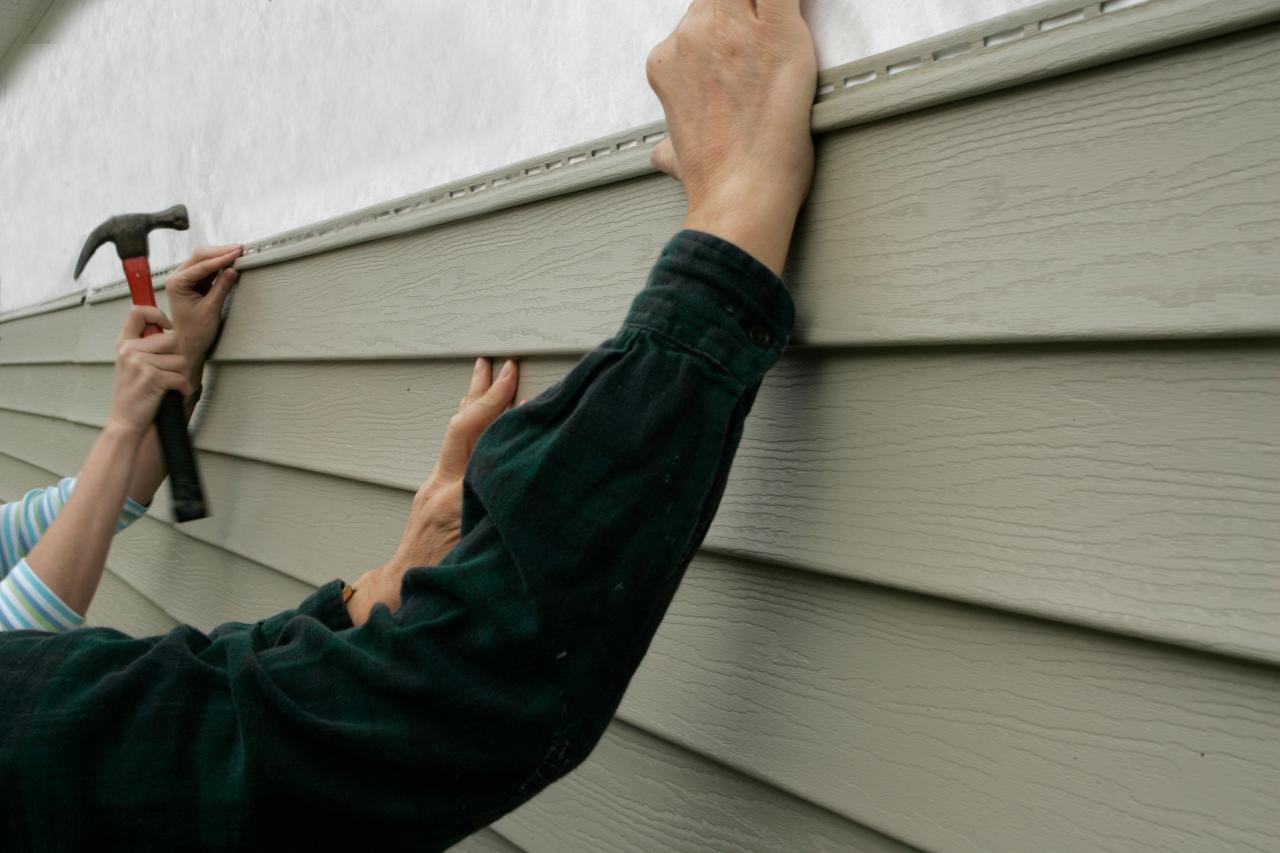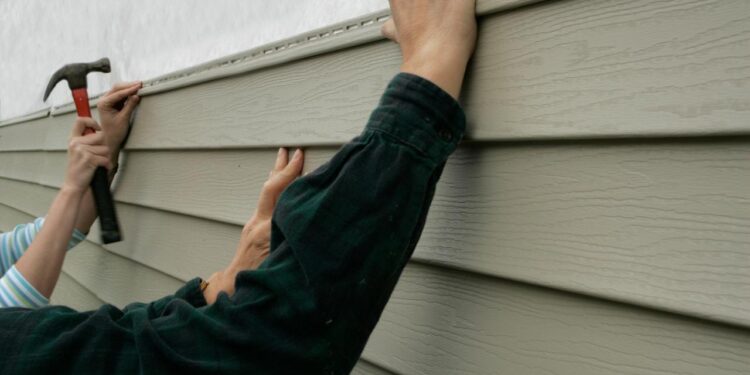Embarking on the journey of repairing siding opens up a world of essential tools, common issues, repair techniques, and maintenance tips. From inspecting for damage to mastering repair techniques, this guide covers everything you need to know to keep your siding in top shape.
As you delve deeper into the intricacies of siding repair, you'll uncover the key aspects that ensure a successful restoration process.


Preparation for Siding Repair
Before diving into repairing siding, it's crucial to gather the necessary tools and materials, prioritize safety measures, and inspect the siding for damage to ensure a successful repair process.Essential Tools and Materials
- Siding repair kit or replacement siding pieces
- Hammer
- Nails or screws
- Caulk and caulking gun
- Utility knife
- Tape measure
- Ladder
- Safety goggles and gloves
Importance of Safety Measures
Prioritizing safety is key before starting any repair work on siding. Make sure to wear safety goggles and gloves to protect your eyes and hands from any debris. Use a sturdy ladder to reach higher areas safely and securely.Inspecting the Siding for Damage
Before proceeding with repairs, thoroughly inspect the siding for any signs of damage such as cracks, holes, or rot. Identifying and addressing these issues early on can prevent further damage and ensure a more effective repair process.Common Siding Issues
When it comes to siding, there are various common issues that homeowners may encounter. These issues can arise due to different factors such as environmental conditions and poor installation practices.Types of Damages
- Cracking: Siding can crack over time due to exposure to harsh weather conditions or improper installation.
- Warping: Warping occurs when the siding material bends or distorts, often caused by moisture infiltration or extreme temperature changes.
- Fading: Siding may fade over time due to prolonged exposure to the sun's UV rays.
- Rotting: Rotting is a common issue with wood siding, caused by moisture retention and lack of proper maintenance.
Environmental Factors
- Extreme Temperatures: Fluctuations in temperature can cause siding materials to expand and contract, leading to cracking and warping.
- Moisture: Excessive moisture from rain, snow, or humidity can seep into the siding, causing rotting, mold, and mildew growth.
- Sun Exposure: Prolonged exposure to sunlight can fade the color of siding material and weaken its structural integrity.
Poor Installation Consequences
- Improper Sealing: If siding is not properly sealed during installation, it can allow moisture to penetrate, leading to warping, rotting, and mold growth.
- Inadequate Fastening: Insufficient fastening of siding panels can cause them to come loose or detach during strong winds or storms.
- Misalignment: Incorrect alignment of siding panels can create gaps where moisture can enter, causing damage over time.
Repair Techniques
When it comes to repairing siding, there are various techniques that can be used to address different types of damage. Whether you are dealing with small cracks, holes, or damaged boards, knowing the right repair techniques can help restore the appearance and functionality of your siding.Repairing Small Cracks or Holes
One common issue with siding is small cracks or holes that can develop over time. To repair these, follow these step-by-step instructions:- Clean the area around the crack or hole to remove any dirt or debris.
- Apply a silicone-based caulk to fill in the crack or hole, ensuring it is smooth and level with the rest of the siding.
- Allow the caulk to dry completely before painting over it to match the color of the siding.
Replacing Damaged Siding Boards
When a siding board is damaged beyond repair, it may need to be replaced. Here is the process for replacing damaged siding boards:- Remove the damaged board by carefully prying it off with a pry bar.
- Measure and cut a new siding board to fit the space of the old one.
- Slide the new board into place and secure it with nails or screws.
Repainting or Refinishing Siding
Over time, siding can fade or lose its luster. To restore its appearance, consider repainting or refinishing the siding using the following techniques:- Clean the siding thoroughly to remove any dirt or debris.
- Apply a primer to the siding to ensure proper adhesion of the paint or finish.
- Paint or refinish the siding using a high-quality paint or finish that is suitable for the type of siding you have.
Maintenance Tips
Proper maintenance is essential to prolong the lifespan of your siding and prevent costly repairs down the line. Regular cleaning and inspections can help identify any issues early on.Cleaning and Inspecting Regularly
It is important to clean your siding at least once a year to remove dirt, debris, and mold that can cause damage over time. Inspecting your siding regularly can help you spot any signs of wear and tear before they become major problems.- Use a soft brush or cloth with a mild detergent to clean your siding.
- Rinse thoroughly with a hose to remove any remaining soap residue.
- Inspect for any cracks, holes, or loose panels that may need repair.
Identifying Early Signs of Damage
By learning how to identify early signs of siding damage, you can take action quickly to prevent major repairs and extend the lifespan of your siding.- Look for discoloration, warping, or bubbling on the surface of the siding.
- Check for any gaps or seams that are coming apart.
- Pay attention to any unusual sounds like creaking or cracking when the siding is exposed to strong winds.













